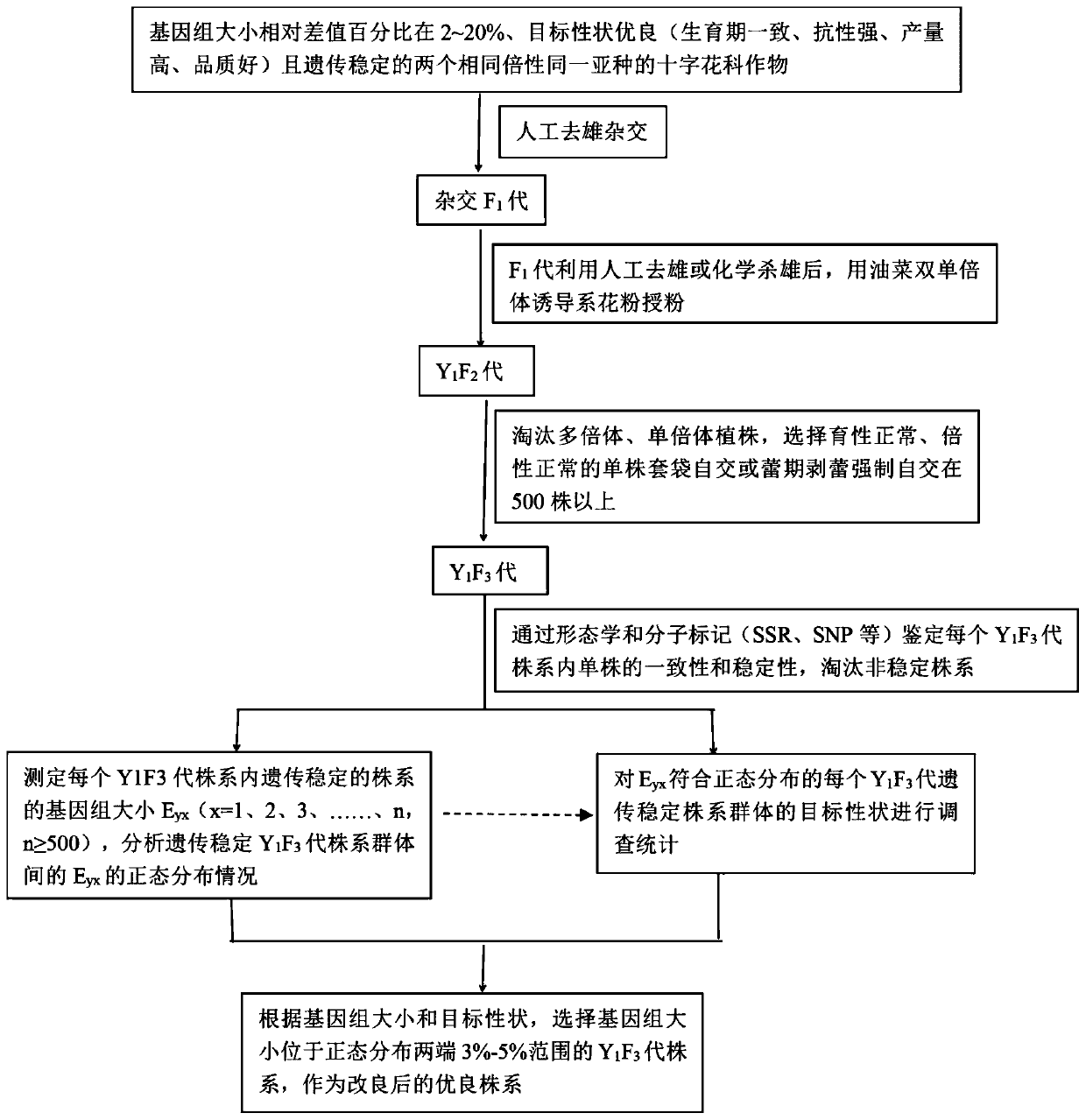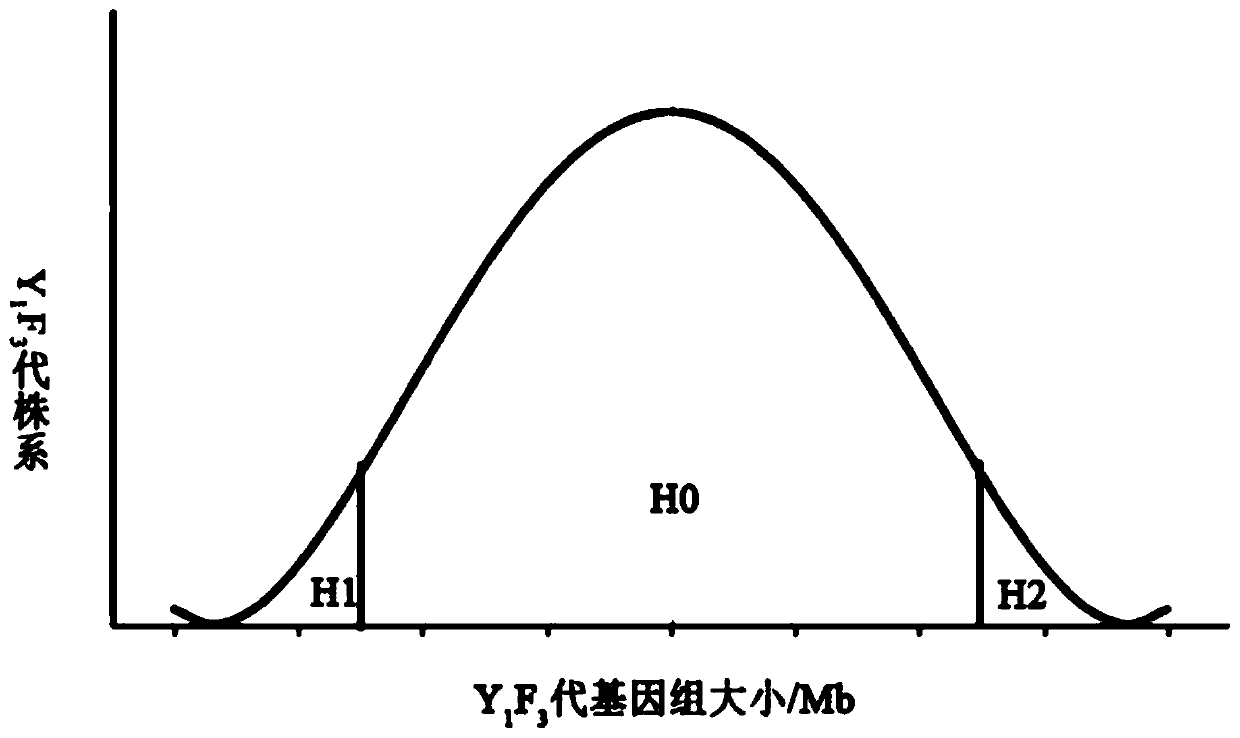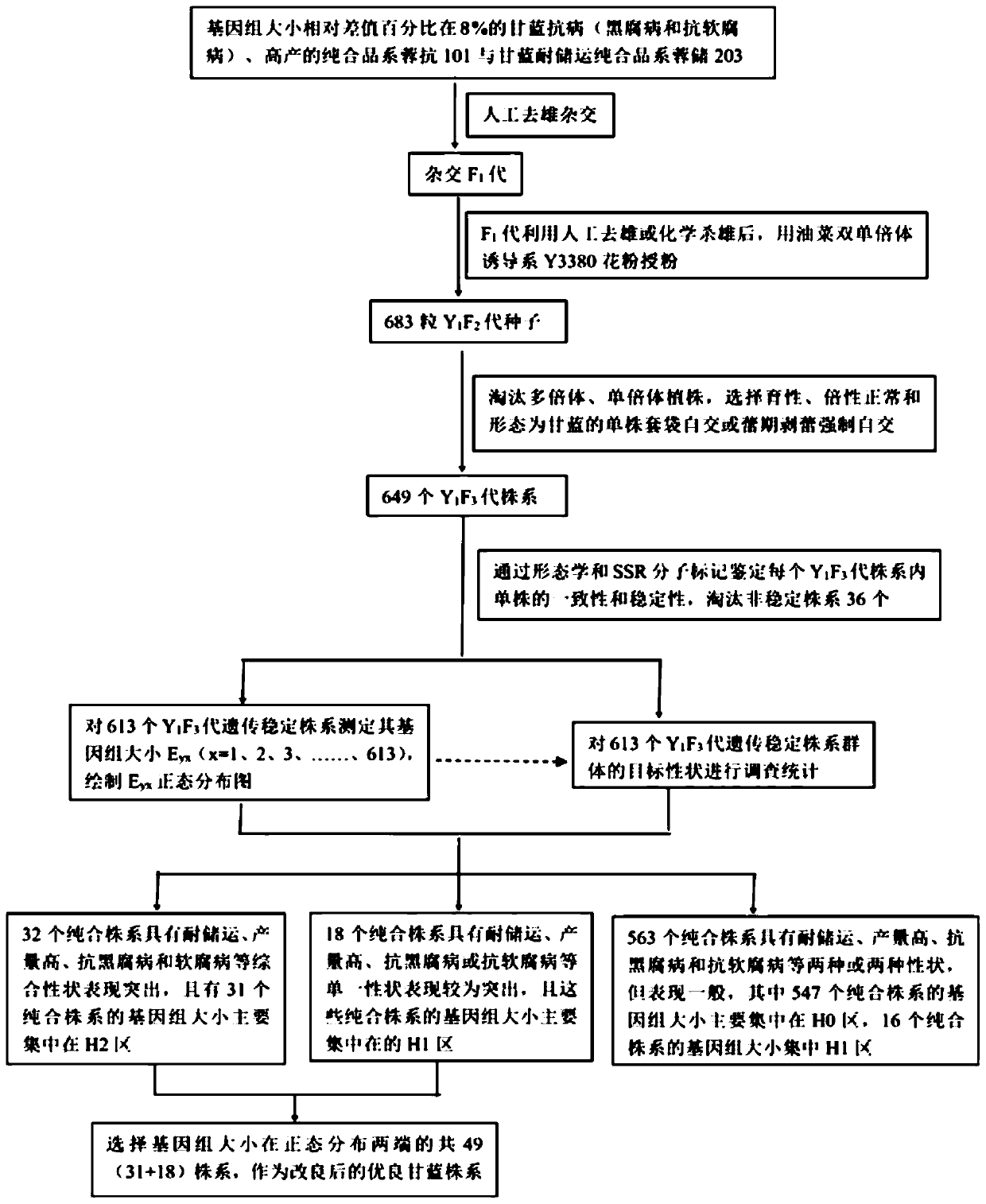Method based on genome size and for improving cruciferous crop characters
A cruciferous crop, genome technology, applied in the direction of plant genetic improvement, botanical equipment and methods, applications, etc.
- Summary
- Abstract
- Description
- Claims
- Application Information
AI Technical Summary
Problems solved by technology
Method used
Image
Examples
Embodiment 1
[0058] see figure 1 with image 3 This example provides a method for improving the traits of cabbage based on the size of the genome. The purpose of the improvement is to quickly obtain several homozygous varieties of cabbage with outstanding comprehensive traits such as strong disease resistance, high yield, and storage and transportation resistance, or a single trait as parents. Further improve the utilization rate of cabbage heterosis. Through the collection, identification and genome size determination of germplasm resources of cabbage, a homozygous line of cabbage with disease resistance (black rot resistance and soft rot resistance) and high yield was selected with a relative difference percentage T of genome size T of 8%. F 1 generation seeds.
[0059] Choose the right sowing time to sow F 1 Generation, make F 1 The generation meets the flowering stage of the double haploid induced line of rapeseed, and the F 1 After artificial emasculation, the rapeseed double ha...
Embodiment 2
[0079] see Image 6 , this example provides a method for improving the traits of Brassica napus based on the size of the genome. The purpose of the improvement is to quickly obtain a number of homozygous Brassica napus varieties with outstanding comprehensive or single traits such as disease resistance, high yield, lodging resistance, and high oil content. Further improve the utilization rate of heterosis in Brassica napus. Through the collection, identification and genome size determination of the germplasm resources of Brassica napus, the clubroot-resistant, high-yield multi-year self-bred homozygous line ZH102 and the lodging-resistant, oily A homozygous line 3581 (oil content > 56%) with a high amount of self-breeding for many years was crossed after emasculation to obtain F 1 generation seeds.
[0080] Choose the right sowing time to sow F 1 Generation, make F 1 The generation meets the flowering stage of the double haploid induced line of rapeseed, and the F 1 After...
PUM
 Login to View More
Login to View More Abstract
Description
Claims
Application Information
 Login to View More
Login to View More - R&D
- Intellectual Property
- Life Sciences
- Materials
- Tech Scout
- Unparalleled Data Quality
- Higher Quality Content
- 60% Fewer Hallucinations
Browse by: Latest US Patents, China's latest patents, Technical Efficacy Thesaurus, Application Domain, Technology Topic, Popular Technical Reports.
© 2025 PatSnap. All rights reserved.Legal|Privacy policy|Modern Slavery Act Transparency Statement|Sitemap|About US| Contact US: help@patsnap.com



